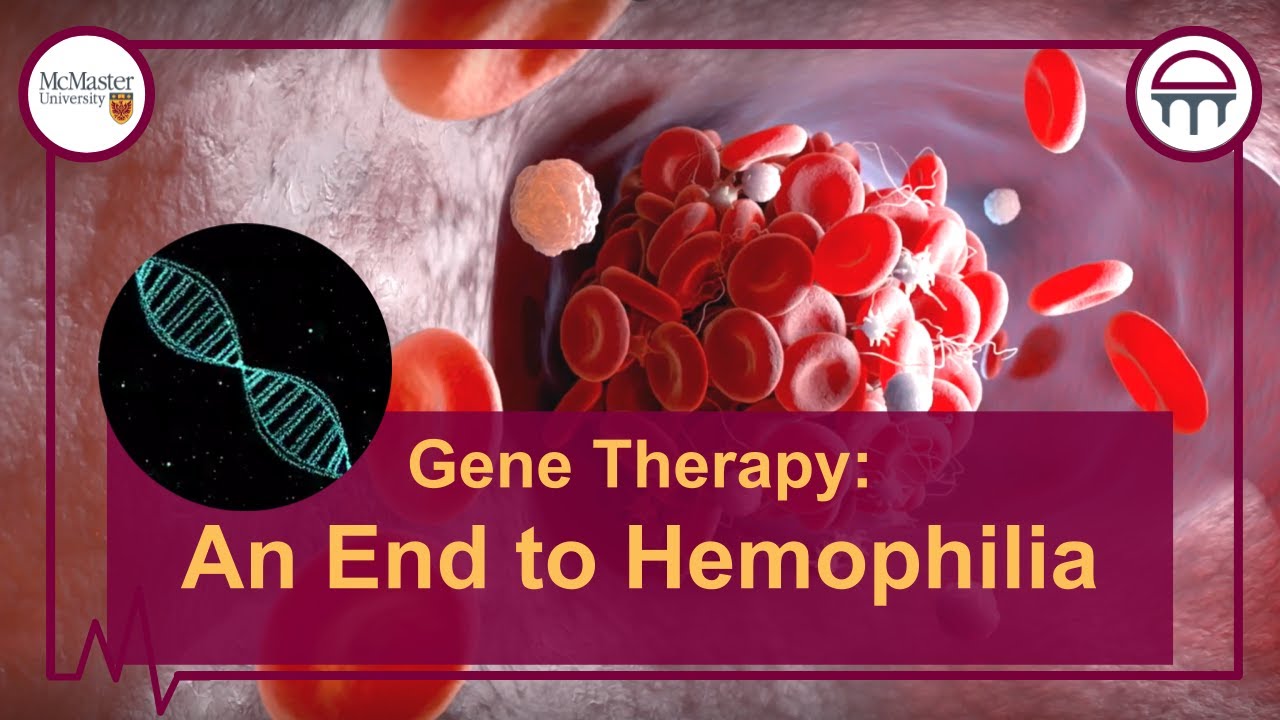Hemophilia and Gene Therapy
Summary
TLDRHemophilia is a genetic disorder affecting blood clotting, leading to prolonged bleeding and potential internal damage. It is caused by defective genes responsible for clotting factors, with Hemophilia A and B linked to deficiencies in factors 8 and 9, respectively. Current treatments involve lifelong clotting factor replacement therapy. Gene therapy offers a potential one-time treatment, where a functional gene is delivered to liver cells to produce the missing clotting factor. Clinical trials are ongoing, with a focus on adult patients to ensure long-term efficacy.
Takeaways
- 🩸 Hemophilia is a rare genetic disorder affecting the blood's ability to clot, leading to prolonged bleeding.
- 🧬 It occurs due to defects in genes responsible for producing clotting factors, which are proteins essential for stopping bleeding.
- 🔍 There are 12 defined clotting factors, with Hemophilia A and B caused by deficiencies in clotting factors 8 and 9, respectively.
- 💉 The most common treatment is clotting factor replacement therapy, administered through infusions for the patient's entire life.
- 🧬 Gene therapy is an emerging treatment that delivers a functional version of the defective gene into cells to produce the missing clotting factor.
- 🌐 A vector, often derived from viruses but modified to carry therapeutic genes, is used to deliver the functional gene into the cells.
- 💊 For treating Hemophilia A and B, the vector targets liver cells, which are responsible for producing clotting factors E and 9.
- 🌱 The liver's role is crucial as it grows with the individual, maintaining the effectiveness of the therapy as it matures.
- 🧪 Gene therapy trials are currently focused on adults with hemophilia to ensure the therapy's benefits do not diminish with age.
- 🔎 Researchers are optimistically monitoring the progress of gene therapies in clinical trials for their safety and efficacy.
- 📚 Individuals with hemophilia should consult with a hematologist or a hemophilia treatment center for information on gene therapy options.
Q & A
What is hemophilia?
-Hemophilia is a rare genetic disorder that prevents blood from clotting properly, leading to prolonged external bleeding and potentially dangerous internal bleeding.
What are the consequences of internal bleeding in hemophilia?
-Internal bleeding in hemophilia can be incredibly dangerous, causing deep bleeding inside joints and muscles, which can lead to permanent disability or be life-threatening, especially when organs are damaged.
How many clotting factors are there in the blood?
-There are 12 defined clotting factors in the blood that help the body to stop bleeding.
What is the difference between hemophilia A and hemophilia B?
-Hemophilia A is caused by a mutation in the gene that creates a deficient amount of clotting factor 8, while hemophilia B is caused by a deficiency in clotting factor 9.
What is the most common treatment for hemophilia?
-The most common treatment for hemophilia is clotting factor replacement therapy, which involves administering the clotting factor into the bloodstream through an infusion.
What is gene therapy and how could it treat hemophilia?
-Gene therapy is a one-time treatment that delivers a functional version of the missing or defective gene into a cell to produce the missing clotting factor. It uses a vector, often derived from viruses, to deliver the functional genes into the cells.
Why is the liver an important organ in treating hemophilia with gene therapy?
-The liver is important because it is responsible for creating a variety of elements in the blood, including clotting factors. By introducing a vector containing the functional gene to liver cells, the liver can produce and secrete functionally active clotting factors back into the blood.
Why are gene therapy trials being conducted in adults with hemophilia?
-Gene therapy trials are conducted in adults to avoid the beneficial effects of the therapy from becoming weaker or wearing off as a child's liver grows with age.
Can standard of care treatments still be used if bleeding occurs during or after gene therapy?
-Yes, if bleeding occurs during or after gene therapy, the use of any standard of care treatment can still be used.
What should an individual with hemophilia do to learn more about gene therapy options?
-An individual with hemophilia should carefully discuss gene therapy options with their hematologist or hemophilia treatment center and visit resources like ASGCT.org for more information.
How does gene therapy work in the context of hemophilia treatment?
-Gene therapy for hemophilia works by targeting the liver cells via infusion with a vector containing the functional gene. This allows the liver to produce the necessary clotting factors to prevent bleeding.
Outlines

Cette section est réservée aux utilisateurs payants. Améliorez votre compte pour accéder à cette section.
Améliorer maintenantMindmap

Cette section est réservée aux utilisateurs payants. Améliorez votre compte pour accéder à cette section.
Améliorer maintenantKeywords

Cette section est réservée aux utilisateurs payants. Améliorez votre compte pour accéder à cette section.
Améliorer maintenantHighlights

Cette section est réservée aux utilisateurs payants. Améliorez votre compte pour accéder à cette section.
Améliorer maintenantTranscripts

Cette section est réservée aux utilisateurs payants. Améliorez votre compte pour accéder à cette section.
Améliorer maintenant5.0 / 5 (0 votes)






